What’s Ahead for the Movement to Create Safe Outdoor Space in Every Neighborhood
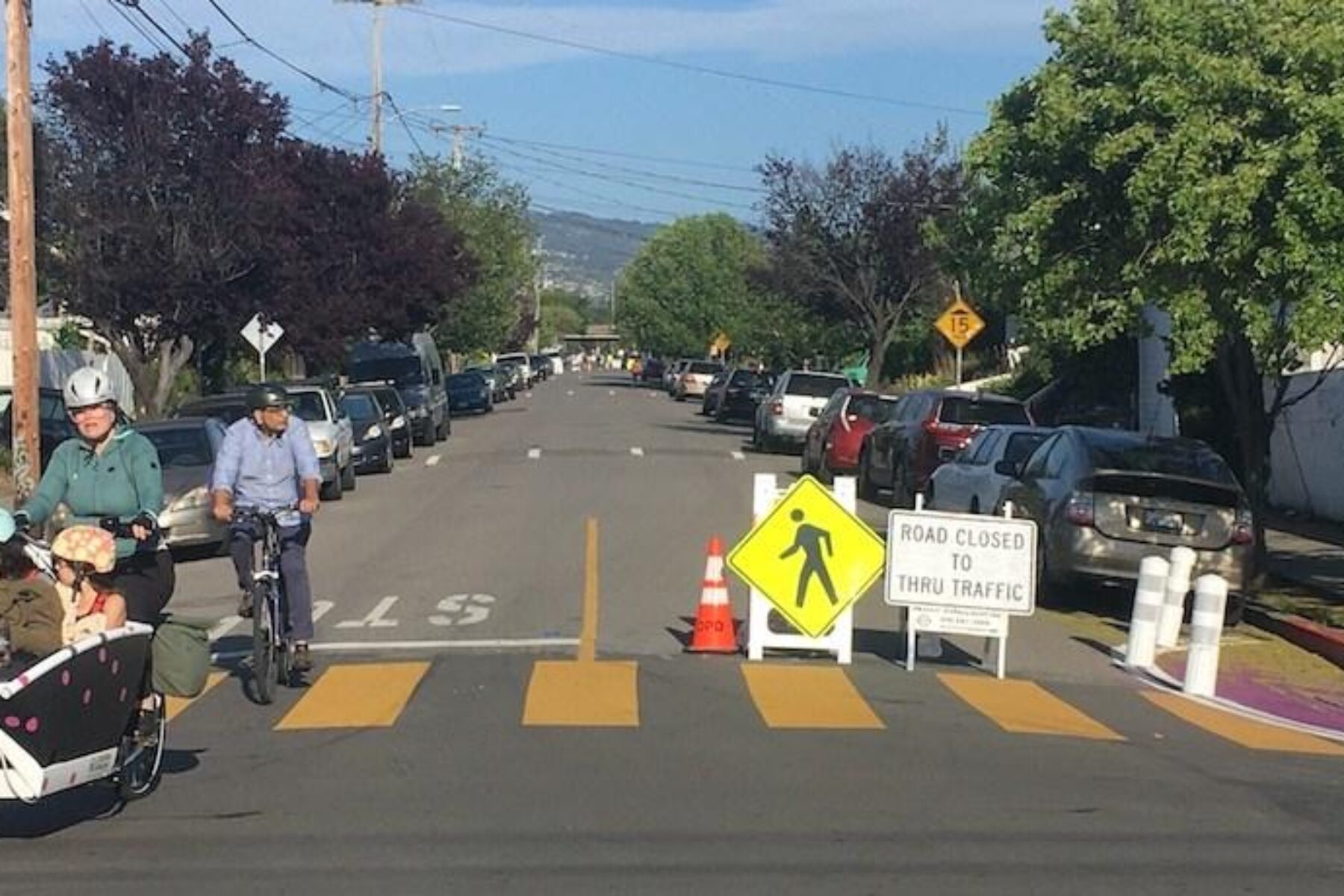
It’s March 2020, a few days shy of St. Patrick’s Day. Philadelphia is beginning to shut down due to COVID-19, a novel coronavirus that scientists are still investigating. As gyms and fitness studios—and many other then-typical places for social interaction—begin to shutter, more people are turning to walking and bicycling outdoors for exercise and mental respite.
Randy LoBasso, the policy director for the Bicycle Coalition of Greater Philadelphia, ventures to the Schuylkill Banks Boardwalk for a bike ride. “I was feeling really stressed out and weird about what was going on,” he recalled. He wears a mask, even though they were not yet required by city officials. He also plans to keep six feet apart from others, per the guidance set out by the Centers for Disease Control and Prevention (CDC).
“I got to the trail, and it was impossible for anyone to keep their distance,” said LoBasso, noting that the Schuylkill Banks Boardwalk—one of the most-used trails in the city—is considerably wide. As an advocate, his mind immediately switched to solution-oriented thinking. “All of these people need more space to be outside and not in close proximity to other people,” he observed. “But what can be done to give people more space since this is going to be going on for … at least a little while?”
As LoBasso’s gears began to turn, Rails-to-Trails Conservancy (RTC) collected data. An analysis of 31 trail counters for the week of March 16–22 found a nationwide trail usage increase of nearly 200% from that same week in 2019. It was clear that the demand for safe spaces to be active outside was far exceeding supply. The organization used this data as the driver for a petition that advocated for cities and towns to close streets to vehicle traffic (which had dropped substantially due to mandatory lockdowns), creating more places for people to walk, bike and roll at a safe distance from one another.
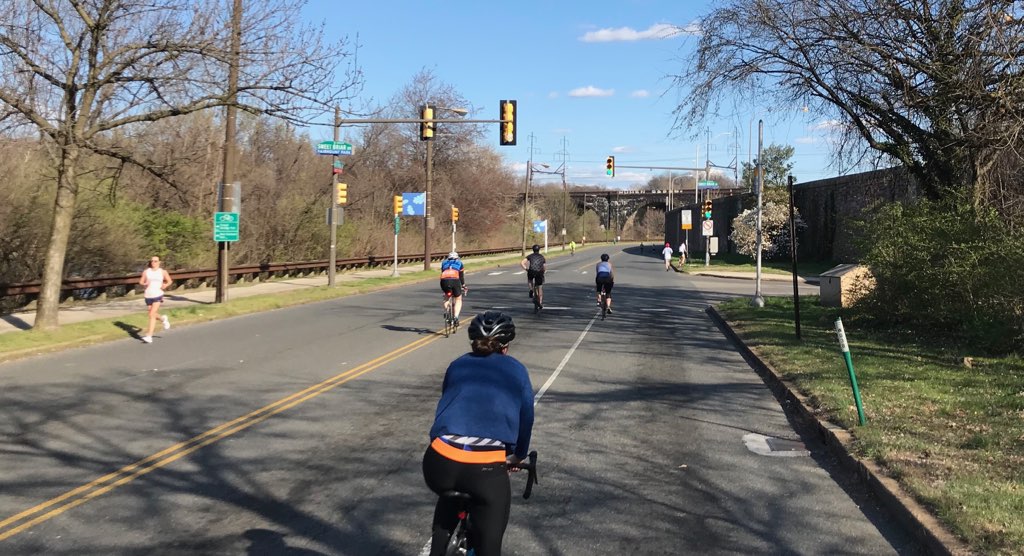
In the transportation world, this is known as the Open Streets movement.
“Open Streets is a more accessible way for people to see themselves being outside and getting access to the joy of walking, running and riding their bikes,” said Liz Thorstensen, RTC’s vice president of trail development. “It lowers the barriers to entry for a lot of people, and it can really be an entrée into getting more movement, relaxation and spending time with friends and family.”
RTC’s petition received more than 10,000 signatures in a matter of weeks, according to Brandi Horton, RTC’s vice president of communications. They were able to leverage that support, which showed a clear demand for more outdoor space. “You can use this to encourage policies to take place in your community,” Horton and her colleagues told partner organizations. And they did.
Pandemic Spurs Pedestrian Safety Measures Across the Country
At the height of the pandemic, hundreds of cities and towns and countless miles of streets closed to car traffic.
In Philadelphia, LoBasso and others advocated for the closure of Martin Luther King Drive. Located next to the 2,000-acre Fairmont Park, MLK Drive has closed to car traffic on weekends since the 1990s. Therefore, it had the built-in infrastructure for the proposed 24/7 closure in response to the pandemic. MLK Drive “immediately became a real destination in the city,” said LoBasso. Usage of the path grew from 500 people daily to 5,000 on weekdays and 10,000 on weekends, he noted.
While the city unveiled plans in July 2021 to reopen MLK Drive to vehicular traffic (with a modified schedule of weekend closures), the Office of Transportation, Infrastructure and Sustainability announced on Aug. 4 that the route will remain closed, between the Philadelphia Museum of Art and Sweetbriar Drive, until 2024 so that repairs can be made to the deteriorating MLK Drive Bridge. The bridge will still be open to bicycle and pedestrian traffic.
Also in the Keystone State, Pittsburgh officials “saw the need to creatively repurpose our public space to better serve the needs of our residents” during the pandemic, said Kimberly Lucas, an assistant director at the city’s Department of Mobility and Infrastructure. They gave residents who requested “slow streets” in their neighborhoods signage restricting those roads to local traffic only, “thereby reducing traffic volumes and enabling the street space to be available for pedestrian and other recreational activities in a socially distant environment.” Catering to restaurants in the city’s business corridors, the city expanded its sidewalk café program, in some cases, closing off entire roadways to vehicle traffic.
Learn more about Pittsburgh’s efforts to create more space for walking and bicycling through OpenStreetsPGH, a series of “mini-events” designed to open city streets for safe outdoor recreation.
Pittsburgh officials also modified their Traffic Calming request process “to make it more equitable and responsive to the needs of our residents,” Lucas said.
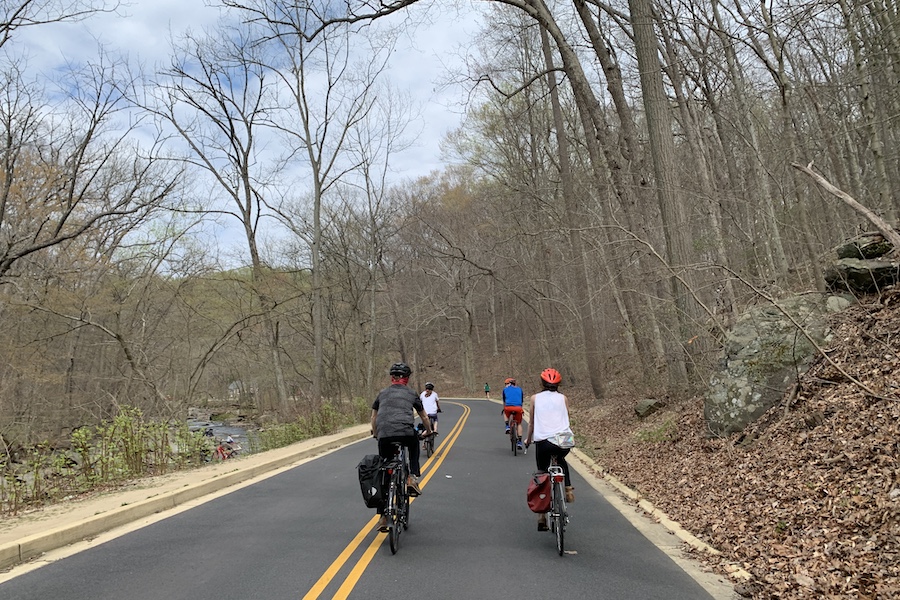
In April, the National Park Service (NPS) halted car traffic along a 4-mile stretch of Beach Drive, a roadway that runs through the 3,000-acre, federally owned Rock Creek Park in Washington, D.C. Similar to MLK Drive, a segment of the road was already closed to car traffic on weekends. “It’s been really widely used—a tremendous number of people are really enjoying it,” said Jeanne Braha, executive director of Rock Creek Conservancy, who uses it often for walking meetings.
D.C. also announced its plans to host its second Open Streets event this October, closing a portion of Georgia Avenue to vehicles for a day, and to expand on this series, “Streets for People,” with more events in 2021 and 2022.
Rock Creek Conservancy’s work to keep portions of Beach Drive closed to vehicle traffic continues. On July 8, the National Park Service kicked off a public comment period, ending Aug. 22, to help shape their approach to how, or if, Beach Drive will remain a community recreation space.
LEARN HOW TO GET INVOLVED
On the West Coast, narrow sidewalks and a dearth of open space led to immediate overcrowding in Oakland in the early days of the pandemic, said Ben Kaufman, a trail development manager for RTC’s Western Regional Office.
While vehicle traffic on roads declined, people who did drive sped more than normal, Kaufman said. “So it just didn’t feel like there was a lot of safe space for people to walk and bike.”
After pressure from advocates, the city initiated its Slow Streets program, which was derived from a 2019 bike plan that outlined a network of neighborhood biking routes. The designated roads—totaling 21.2 miles—gave priority to people who wanted to bike, walk and scooter in the street. No longer thoroughfares, these streets limited car traffic to residents who lived in the neighborhoods and needed to find parking.
The pandemic also pushed for cities to become “more flexible and nimble” when building bicycle infrastructure, said Kaufman. In the before times, cities would “go through these very long and drawn-out plans” that would take years, then spend more time securing millions of dollars in funding.
“There was kind of a reckoning during COVID that maybe we can have pilot programs or ways to change streets quickly, easily and cheaply to make it safer and easier for people to get around now [on bike or on foot]—and then look back and see how successful we were, and whether we should move to a more permanent version of the project or scrap it altogether,” he continued.
This line of thinking promoted a more ambitious idea: a quick-build shared-use path for people to walk, run, bike, scooter and wheel across the Bay Bridge, which is currently restricted to car traffic. Not only would the protected facility help to provide more and better transportation options across the bridge (which is facing increasing levels of congestion), but advocates say it would help reduce pollution caused by emissions from private vehicles and provide marginalized residents an affordable way to access the structure.
DON’T MISS: The Bay Bridge Needs a Climate-Friendly Makeover and It Needs One Now (San Francisco Chronicle)
Other communities across the country were supported with funding from the National Association of City Transportation Officials (NACTO), which, in June 2020, announced a rapid-response grant program to support 10 cities in transforming streets “in communities hit disproportionately by the COVID-19 pandemic.” The cities received $25,000 each for projects that focused on safe physical distancing for people walking, biking, taking transit and using public space.
Strategies for Open Streets
As the next iteration of open and complete streets movements ramp up, RTC offers tips and thoughts for city leaders and advocates to consider.
- Get creative. Identify underutilized roads in your street network. Come up with ways to quickly and cheaply modify them to prioritize pedestrians.
- Center equity. Ensure that the concerns of the most marginalized people in your city are being voiced and addressed in planning.
- Involve community residents in strategic planning. Different communities will need different treatments for creating safe roads. A simple cone to block cars in one neighborhood may not work in another.
- Don’t be afraid to try and fail. The great thing about pilot programs is if they don’t succeed, you can take them out quickly and repurpose them in a way that makes sense.
- Follow up with the community. Once the program is underway, follow up with community members to see if they’re using the new infrastructure and how it could improve.
- Not doing anything is also a decision. By not changing anything and sitting on your hands, you’re effectively deciding to prioritize cars over people.
Where Do We Stand Today?
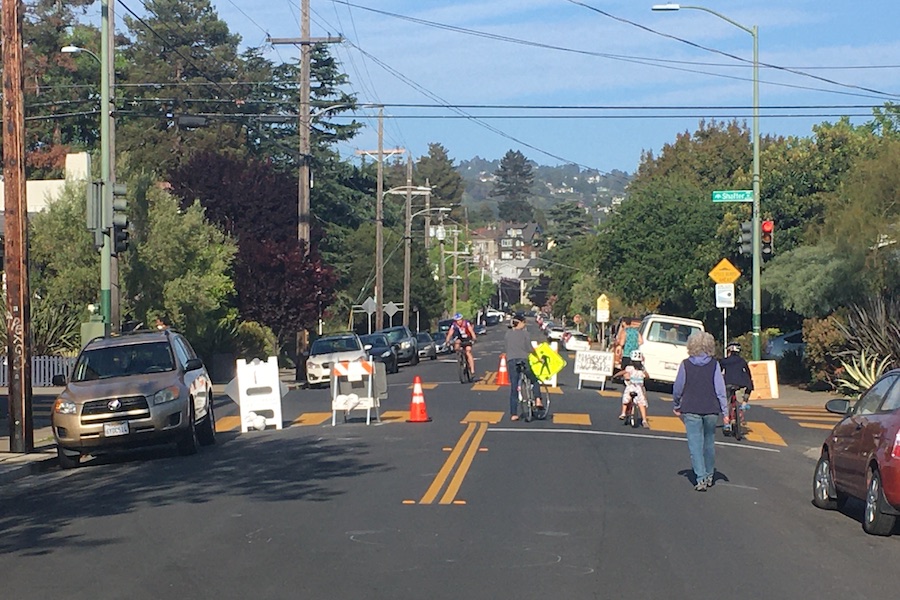
With pandemic-related restrictions lifting, advocates are now fighting to retain and expand on-street closures and quick-builds that surfaced during lockdowns.
“This is a real opportunity for local officials to think creatively about what we hold on to,” said Horton, acknowledging that as things slowly begin to return to pre-pandemic norms, city officials may discard progress made in the Open Streets movement.
They cite the efforts made to create more open space during the pandemic as an opportunity to learn and strengthen efforts moving forward, with more focus on community engagement and equitable implementation. For example, NACTO is doubling down on its efforts. The organization announced in June that it’s distributing $50,000 checks to 10 cities that work with community partners to “transform streets into community assets that aid in pandemic recovery.”
Meanwhile, organizers like Kaufman are working to build momentum on a local level. RTC’s West Coast efforts currently include working in concert with other sustainable transportation advocates in the Bay Area to push for a more multimodal Bay Bridge in the short term that includes bus-only lanes, better access for active transportation, and the quick-build shared-use path. They’re also strategizing ways to build support in the California State Legislature.
Kaufman said they’re inspired by Transportation Alternatives’ recent success in adding quick-build bike lanes on the Brooklyn and Queensboro bridges in New York City.
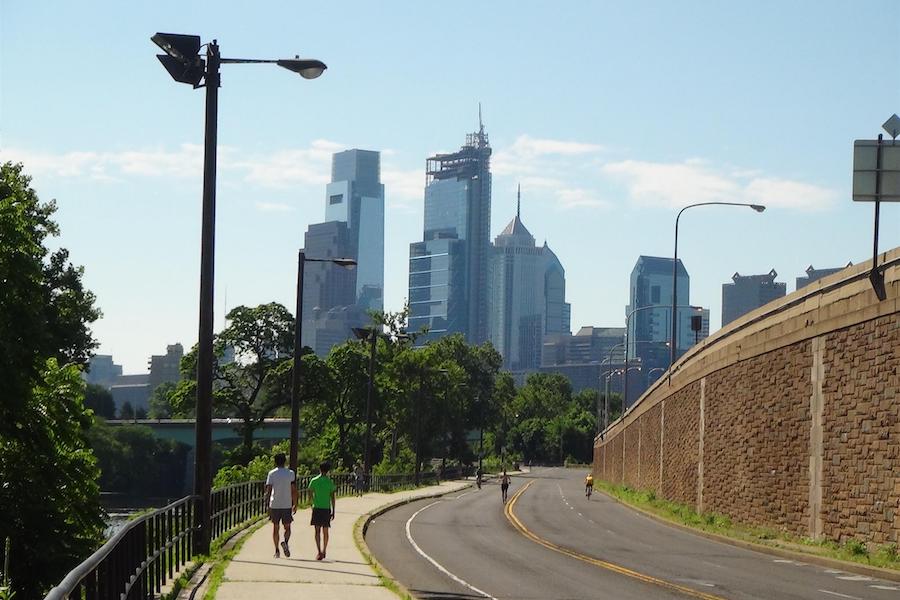
In Philadelphia, city officials are reopening MLK Drive to motor vehicles the first week of August, but will continue to have open streets on weekends, said LoBasso. They’re also exploring options to make streeteries and some partially open streets permanent, “but we probably won’t know the scale of those efforts until Fall,” he said, adding that one city councilmember has “made it a priority to push forward with that issue when the legislative body reconvenes.” Pittsburgh’s slow streets remain in operation as city officials “determine what a future program could look like,” said Lucas.
While some leaders are now wavering on the idea, local legislatures in D.C. and Montgomery County, Maryland, passed resolutions calling for NPS to permanently close a stretch of Beach Drive, according to the People’s Alliance for Rock Creek, an advocacy group that formed to support permanent closure of the roadway.
The federal agency has since begun an environmental assessment process and is hosting its first public meeting about the project in early July, according to Braha. “The Conservancy encourages all community members—and all Americans who care about national parks—to weigh in during the process.”

Donate
Everyone deserves access to safe ways to walk, bike, and be active outdoors.
